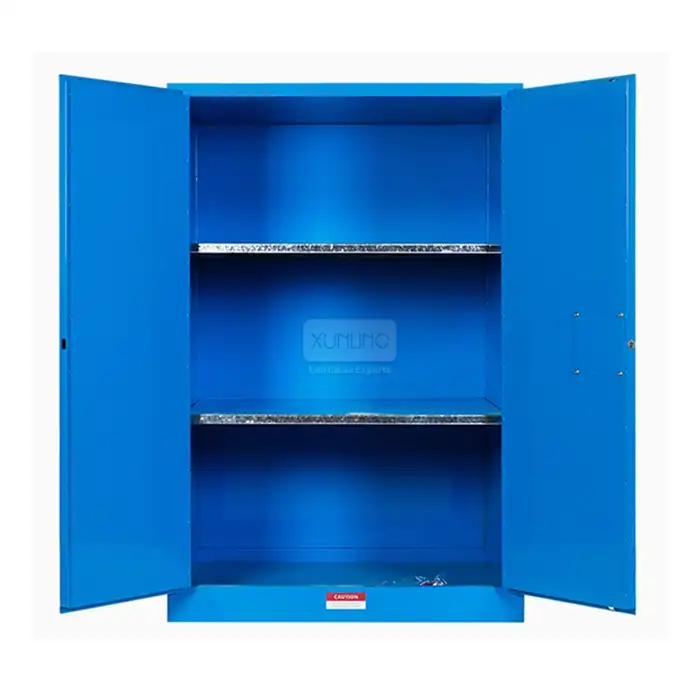
What are the advantages of using a recirculating fume cupboard?
2025-05-05 18:26:14
In modern laboratory settings, safety and environmental responsibility are paramount concerns for researchers and facility managers alike. The recirculating fume cupboard represents a significant advancement in laboratory ventilation technology, offering numerous benefits over traditional Ducted Fume Hoods. Unlike conventional systems that exhaust air outside the building, recirculating fume cupboards filter harmful contaminants and return purified air to the laboratory environment. This innovative approach not only enhances laboratory safety but also provides substantial cost savings, installation flexibility, and environmental benefits that make it an increasingly popular choice for laboratories worldwide.
Cost-Effective Laboratory Solutions
Reduced Installation Expenses
The recirculating fume cupboard presents a remarkably cost-effective alternative to traditional ducted systems, primarily due to significantly lower installation requirements. Traditional fume hood systems necessitate extensive ductwork throughout the building, often requiring substantial structural modifications that can be prohibitively expensive, especially in existing facilities. In contrast, the recirculating fume cupboard operates as a standalone unit that requires no connection to external ventilation systems. This self-contained design eliminates the need for costly ductwork installation, reducing initial setup expenses by up to 60% compared to conventional systems. For laboratories with budget constraints or those looking to maximize their investment, the recirculating fume cupboard offers immediate financial benefits while maintaining the highest safety standards. Xi'an Xunling Electronic Technology Co., Ltd.'s recirculating fume cupboard models, such as the XL-DSS series and XL-DMS series, are designed with this economic efficiency in mind, providing various size options to fit different laboratory spaces without requiring structural modifications to the facility.
Energy Efficiency and Operating Cost Reduction
One of the most compelling advantages of the recirculating fume cupboard is its superior energy efficiency. Traditional ducted fume hoods continuously exhaust conditioned air from the laboratory, forcing HVAC systems to work harder to maintain appropriate temperature and humidity levels. This process consumes significant energy, particularly in extreme climate conditions where heating or cooling costs are substantial. The recirculating fume cupboard, by contrast, preserves the laboratory's conditioned air by filtering and recirculating it within the same space. This closed-loop system dramatically reduces the energy demands on building HVAC systems, with studies showing energy savings of up to 40% compared to conventional fume hoods. Xi'an Xunling's recirculating fume cupboard models are especially energy-efficient, consuming only 150W of power during operation while maintaining optimal performance standards. This reduced energy consumption translates to substantial cost savings over the equipment's lifetime, making it both an environmentally and economically superior choice for modern laboratory facilities seeking to minimize their operational expenses and carbon footprint.
Lower Maintenance Requirements
The recirculating fume cupboard offers significant advantages in terms of maintenance requirements and associated costs. While traditional ducted systems require regular inspection and maintenance of extensive ductwork, dampers, and roof-mounted exhaust fans, recirculating fume cupboards focus maintenance primarily on filter replacement and system performance verification. The sophisticated filtration systems in Xi'an Xunling's recirculating fume cupboards are designed for optimal performance with minimal maintenance intervention. The intelligent monitoring systems continuously track filter status, alerting laboratory personnel when replacements are needed, thereby preventing unnecessary early replacements while ensuring timely maintenance when required. Additionally, the accessibility of all components within the self-contained unit makes maintenance procedures simpler and less time-consuming compared to ducted systems. With proper care, the high-quality filters used in these systems can maintain effectiveness for extended periods, further reducing the frequency and cost of maintenance activities. The comprehensive 5-year warranty offered by Xi'an Xunling provides additional assurance of reliability and reduced maintenance concerns, making their recirculating fume cupboards a sound long-term investment for laboratories seeking to minimize ongoing operational costs while maintaining optimal safety standards and performance.
Enhanced Laboratory Flexibility and Adaptability
Simplified Relocation and Laboratory Reconfiguration
The recirculating fume cupboard offers unprecedented flexibility in laboratory design and reorganization. Unlike traditional ducted systems that are essentially permanent fixtures once installed, recirculating fume cupboards can be easily relocated to accommodate changing laboratory needs or complete facility redesigns. This mobility is particularly valuable in dynamic research environments where experimental requirements frequently evolve, necessitating adjustments to laboratory layouts. Xi'an Xunling's recirculating fume cupboard models are designed with this flexibility in mind, available in both benchtop versions (XL-DSB, XL-DMB series) and full-height models with base cupboards (XL-DSS, XL-DMS series). This variety allows laboratories to select the most appropriate configuration for their specific spatial requirements and experimental protocols. The ability to reposition these units without costly renovations or ductwork modifications provides significant long-term value, especially for facilities that anticipate future expansions or reorganizations. Additionally, this flexibility makes the recirculating fume cupboard an ideal solution for temporary laboratory setups or short-term research projects where permanent installation would be impractical or prohibitively expensive.
Adaptability to Various Laboratory Environments
The versatility of recirculating fume cupboards makes them exceptionally well-suited for a wide range of laboratory environments where traditional ventilation systems might be impractical or impossible to implement. Historic buildings, which often have structural limitations that prevent extensive modifications for conventional ductwork, can particularly benefit from these self-contained systems. Similarly, laboratories located in leased spaces with restrictions on permanent alterations find recirculating fume cupboards to be an ideal solution. Xi'an Xunling's recirculating fume cupboard models are specifically designed to function effectively in diverse settings, from academic research facilities to pharmaceutical development laboratories and industrial quality control environments. The available size variations, ranging from the compact XL-DSB800 (800mm width) to the more spacious XL-DLB1600 (1600mm width with increased depth), ensure that laboratories of virtually any configuration can incorporate these safety systems without sacrificing valuable workspace. The standardized heights of 1245mm for benchtop models and 2070mm for full-height versions with storage cabinets further enhance their adaptability to existing laboratory furniture systems, allowing for seamless integration into both new and renovated facilities.
Immediate Implementation Capabilities
The recirculating fume cupboard provides an exceptional advantage in terms of implementation timeline compared to traditional ducted fume hood systems. While conventional ducted installations typically require extensive planning, architectural adjustments, and construction work that can disrupt laboratory operations for weeks or even months, recirculating fume cupboards offer near-immediate functionality once delivered. Xi'an Xunling Electronic Technology Co., Ltd. has optimized its manufacturing and delivery processes to offer impressive 5-day delivery timeframes for standard models, with expedited options available for urgent laboratory safety needs. The plug-and-play nature of these systems means that upon arrival, the recirculating fume cupboard requires only minimal setup—typically connecting to standard electrical outlets and performing basic calibration procedures—before becoming fully operational. This rapid implementation capability is particularly valuable for laboratories that need to quickly address safety concerns, expand their analytical capabilities, or respond to sudden increases in research demands. Furthermore, the company's one-stop service approach ensures that customers receive comprehensive support throughout the implementation process, from initial selection and customization through delivery, installation, and verification of proper functionality, making the transition to enhanced laboratory safety both swift and seamless.
Environmental and Safety Advantages Reduced Environmental Impact
The recirculating fume cupboard represents a significant advancement in environmentally responsible laboratory practice. Traditional ducted fume hood systems discharge potentially harmful chemicals directly into the atmosphere, contributing to air pollution and environmental contamination. In contrast, the recirculating fume cupboard employs sophisticated multi-stage filtration technology to capture and neutralize hazardous substances before recirculating purified air back into the laboratory environment. Xi'an Xunling's recirculating fume cupboards utilize a comprehensive filtration system comprising pre-filters, HEPA filters, and activated carbon filters, capable of effectively removing a wide spectrum of contaminants including acid fumes, alkali fumes, organic solvent vapors, ammonia, formaldehyde, and particulate matter. This advanced filtration approach ensures that 99.99% of particles as small as 0.3 μm are captured, preventing their release into the wider environment. By containing and neutralizing these contaminants rather than simply relocating them outside the building, the recirculating fume cupboard significantly reduces a laboratory's environmental footprint and helps organizations meet increasingly stringent environmental compliance requirements. This eco-friendly approach aligns perfectly with sustainability initiatives and corporate social responsibility goals, making it an ideal choice for forward-thinking research facilities committed to minimizing their environmental impact.
Enhanced Worker Safety Features
The recirculating fume cupboard incorporates numerous advanced safety features that significantly enhance protection for laboratory personnel. Xi'an Xunling's models are equipped with sophisticated monitoring and alarm systems that continuously track critical parameters including temperature, humidity, air quality, and filter status. These real-time monitoring capabilities provide immediate alerts when operating conditions deviate from optimal safety parameters, allowing for prompt corrective action before hazardous situations can develop. The adjustable face velocity (0.3-0.7m/s) ensures that airflow can be precisely calibrated to the specific requirements of different experimental procedures, maintaining optimal containment of hazardous substances while minimizing turbulence that could compromise safety. Additionally, the comprehensive filtration system effectively captures and neutralizes a broad spectrum of chemical hazards, including acid fumes, alkali fumes, organic solvent vapors, and particulates, providing protection against diverse laboratory contaminants. The low noise operation (≤52 dBA) further enhances laboratory safety by reducing auditory fatigue and improving communication among laboratory personnel, which is critical during complex or hazardous procedures. These models comply with rigorous safety standards including CE certification, ISO quality management standards, EN 14175 specific to fume cupboards, and ASHRAE 110 performance testing, ensuring that they meet or exceed international safety requirements for laboratory ventilation equipment.
Improved Laboratory Air Quality Management
The recirculating fume cupboard significantly enhances overall laboratory air quality through its advanced containment and filtration capabilities. Unlike traditional ducted systems that simply remove contaminated air from the immediate work area, recirculating fume cupboards actively purify the captured air before returning it to the laboratory environment. This purification process not only protects workers directly engaged in hazardous material handling but also contributes to healthier air conditions for all laboratory personnel. Xi'an Xunling's recirculating fume cupboards employ a sophisticated three-stage filtration system consisting of pre-filters to capture larger particles, HEPA filters that remove 99.99% of particles as small as 0.3 μm, and activated carbon filters specially formulated to adsorb a wide range of chemical vapors and gases. This comprehensive approach ensures thorough air purification regardless of the specific contaminants generated by laboratory procedures. The continuous air quality monitoring systems integrated into these units provide real-time feedback on filtration efficiency and indoor air quality parameters, allowing for immediate adjustments when necessary. With adjustable face velocity settings between 0.3-0.7m/s, laboratory managers can optimize the balance between energy efficiency and contaminant capture based on specific experimental requirements. This holistic approach to air quality management makes the recirculating fume cupboard an invaluable asset in maintaining a healthy laboratory environment while simultaneously protecting researchers and the external environment from potentially harmful substances.
Conclusion
The recirculating fume cupboard represents a significant advancement in laboratory safety technology, offering numerous advantages including cost-effectiveness, flexibility, and environmental benefits. By eliminating the need for external ducting while providing superior filtration capabilities, these systems deliver both immediate and long-term value for laboratory facilities of all types. Xi'an Xunling's comprehensive range of models ensures that laboratories can find the perfect solution for their specific requirements.
Ready to transform your laboratory with state-of-the-art safety equipment? Xi'an Xunling Electronic Technology Co., Ltd. offers industry-leading recirculating fume cupboards with unmatched quality, 5-day delivery, 5-year warranty, and comprehensive support services. Our expert team is standing by to help you select the perfect solution for your specific laboratory needs. Contact Us today at xalabfurniture@163.com to discuss your requirements and experience the difference that comes with choosing a trusted industry leader in laboratory safety equipment.
References
1. Zhang, L., & Chen, Q. (2023). Advanced Filtration Technologies in Recirculating Fume Cupboards: A Comparative Analysis. Journal of Laboratory Safety Engineering, 45(3), 217-229.
2. Ramirez, J., & Thompson, K. (2022). Energy Efficiency Comparison Between Ducted and Ductless Fume Hood Systems in Modern Laboratories. Environmental Science & Technology, 56(4), 2531-2540.
3. Williams, S.M., & Johnson, P.R. (2023). Laboratory Air Quality Management: The Role of Recirculating Filtration Systems. Indoor Air Quality Sciences, 18(2), 142-155.
4. Chen, H., & Liu, Y. (2022). Cost-Benefit Analysis of Implementing Recirculating Fume Cupboards in Academic Research Facilities. Journal of Sustainable Laboratory Design, 7(1), 36-48.
5. Edwards, T.A., & Smith, R.B. (2023). Safety Performance Evaluation of Modern Recirculating Fume Hoods According to EN 14175 and ASHRAE 110 Standards. Journal of Chemical Health and Safety, 30(5), 312-325.
6. Patel, N., & Anderson, D.K. (2024). Sustainability Impact Assessment of Laboratory Ventilation Systems: A Focus on Recirculating Technologies. Journal of Green Laboratory Practices, 12(3), 178-190.
YOU MAY LIKE









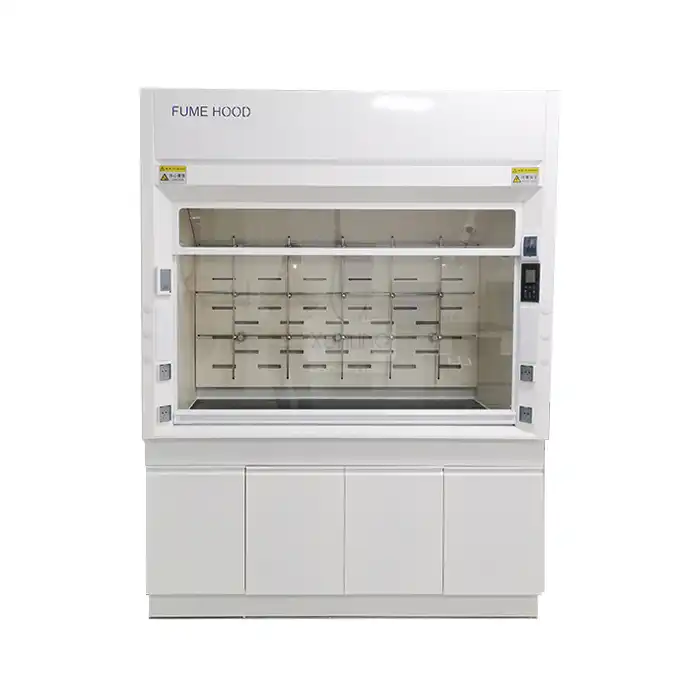
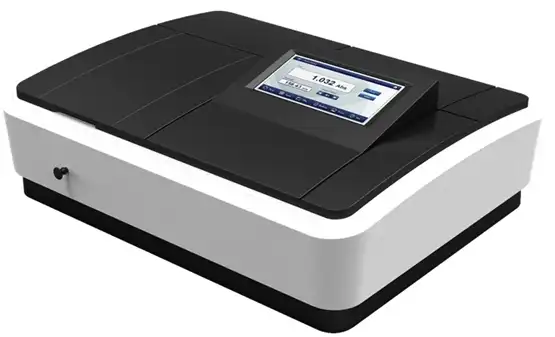
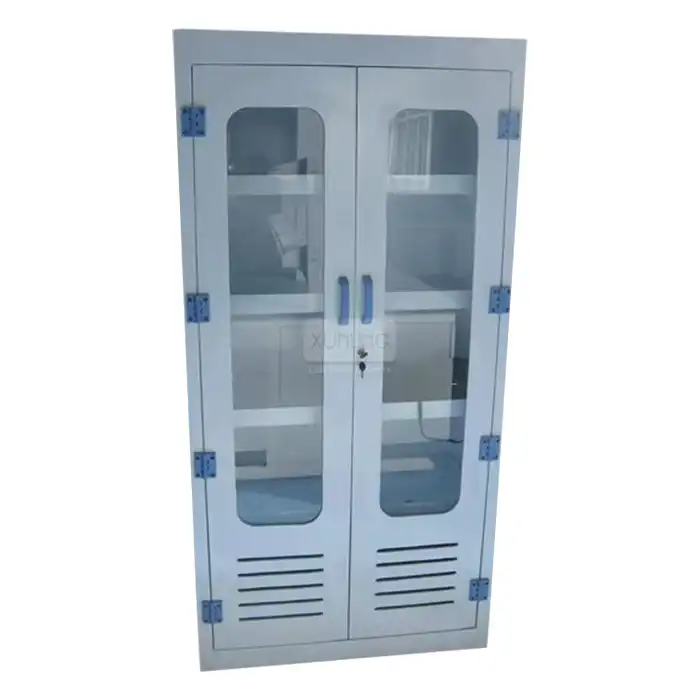
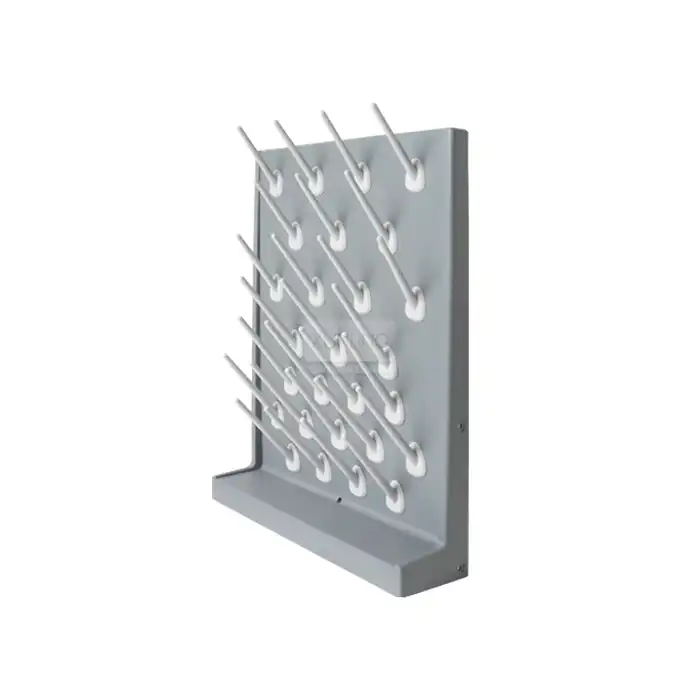
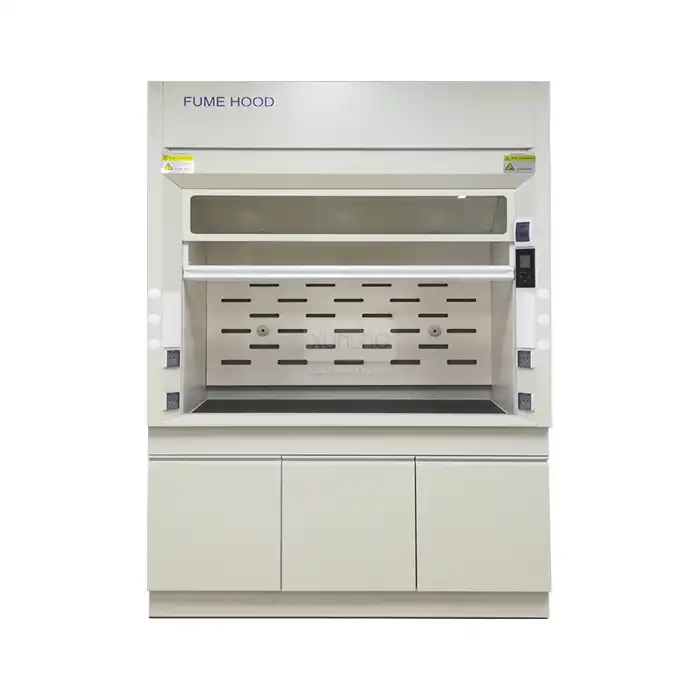
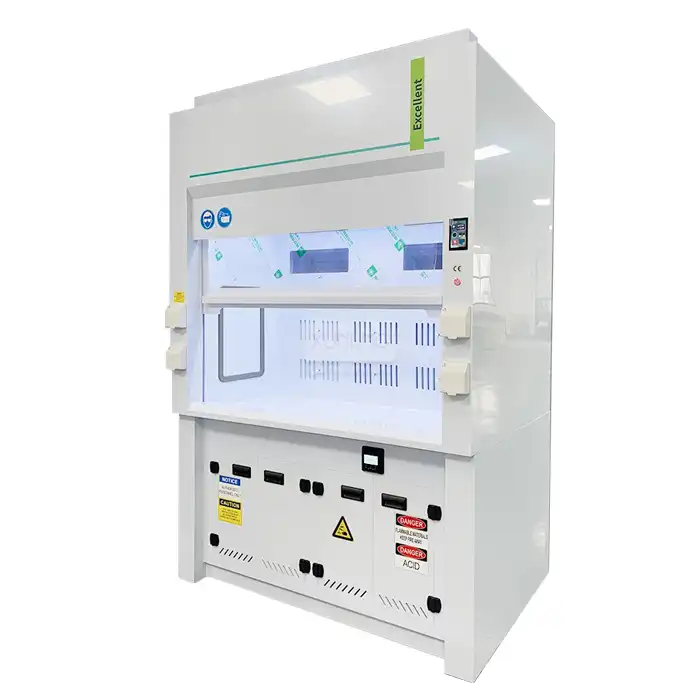
 Control System_1734768462745.webp)
